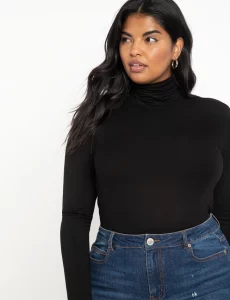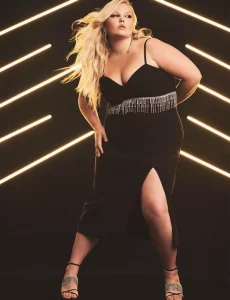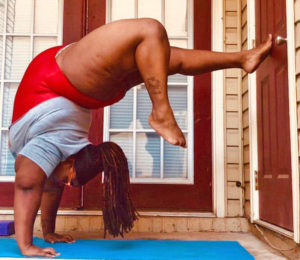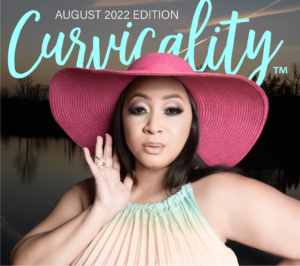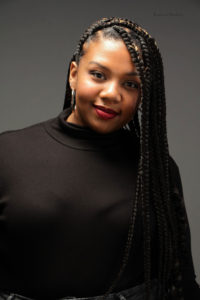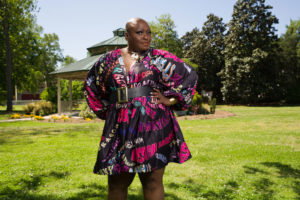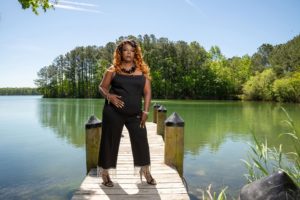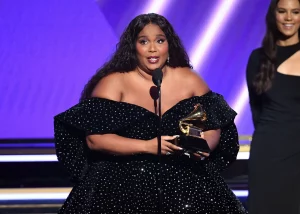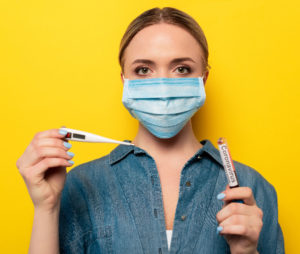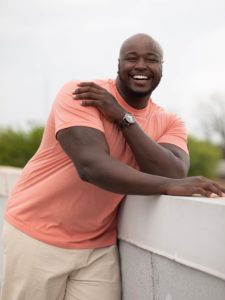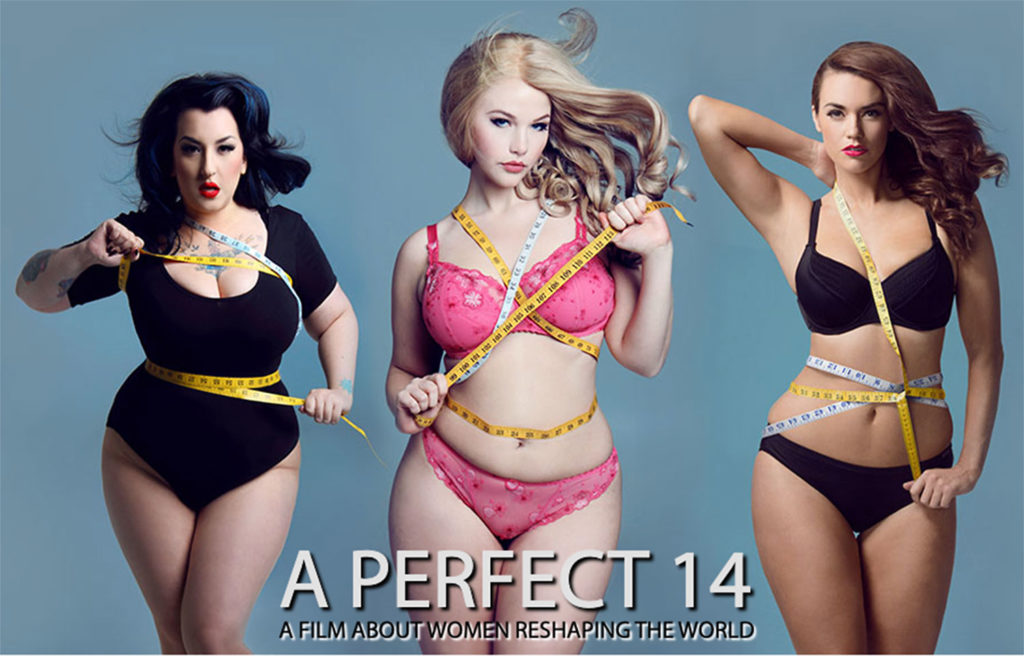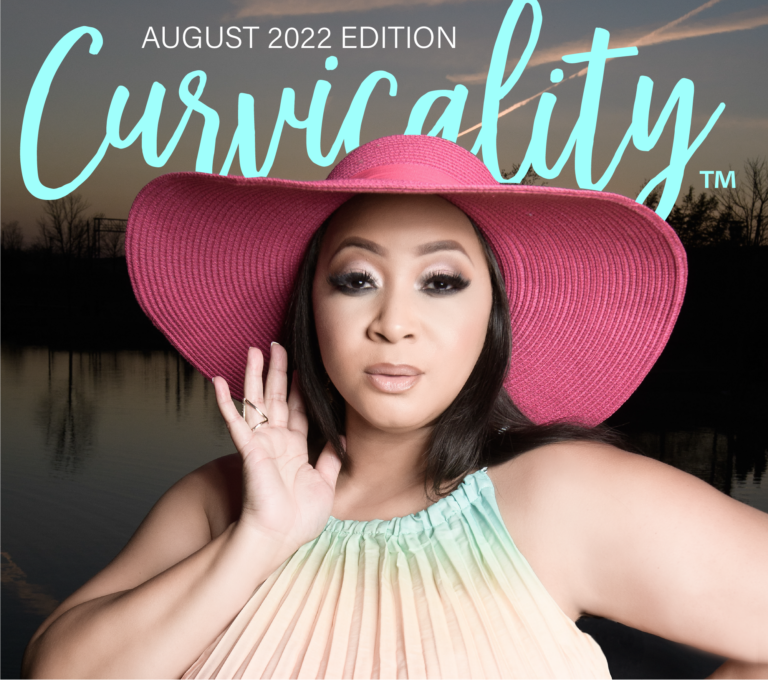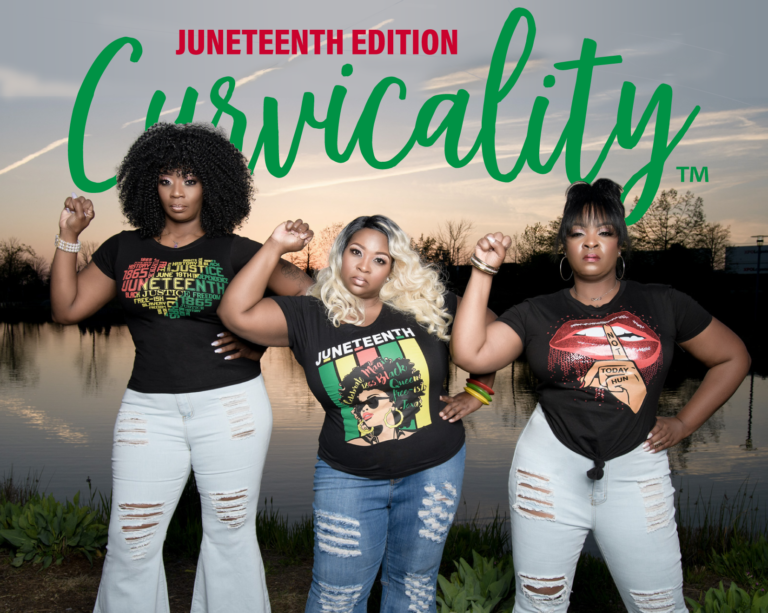“Our idea at the beginning was we wanted to make a movie about three models. We are storytellers,” says Giovanna Morales Vargas, the writer and director.
She and the producer, James Earl O’Brien, wanted to find three plus-size models at different stages in their careers and showing what goes on behind the magazine spreads.
Elly Mayday was just starting out. Laura Wells was already well established and modeling all over the world. The third model, Kerosene Deluxe, was more of an activist-model.
“They technically were all size 14,” says O’Brien.
“The reason we chose the name is in the plus-size industry, the standard sample size is size 14,” Vargas said. That’s also the average clothing size for American women.
Vargas knew she wanted to tell a story about the plus-size modeling world, and she convinced O’Brien there was a good story to tell. From the beginning, Vargas knew she wanted to feature Mayday.
“I got introduced to this world by Elly,” Vargas says. The two young women had met when they previously worked together as servers at a restaurant. “She said she had wanted to become a model. That was her dream.”
Vargas said she was “completely inspired by her work” and how beautiful and curvy Elly was.
“I was on board immediately, right away. I knew it would make such an incredible project. Most people don’t even know about the world of plus-size modeling,” O’Brien said.
The documentary goes behind the scenes and reveals some things most of us never imagined. How much do you think you’d make if you spent several hours modeling for one of the most famous magazines in the world? You are in for a surprise.
And unlike straight-sized models, who need to stay as thin as possible, sometimes plus-size models need to pad their bodies to achieve the desired look.
The Three Models
They started with Elly, who was just launching her career, and looked for two other models who could represent other parts of the story.
The model known as Kerosene Deluxe was born in the Netherlands but had moved to Vancouver. “She is completely alternative. She is very short,” Vargas said. But she’s been very successful within her alternative world, and they wanted to include a different type of model. “When we went to talk to her, she’s very confident, she has a great attitude.”
Australian Laura Wells was chosen for her experience and ability to speak as an industry insider. “She revealed a lot of things that other people don’t talk about. We wanted the audience to get a complete sight of the plus-size model industry,” Vargas said. She’s also a very successful model. She has worked all over the world.”
An Unexpected Turn
The movie they made was different from the movie they planned. One of the models, Elly Mayday, was diagnosed with a rare form of ovarian cancer during the shooting, and they decided to incorporate that into the documentary.
“We didn’t know when we chose her,” O’Brien says.
“When I met her first time to have lunch and talk about his project, she told me that she was going to have surgery,” Vargas says. “She did not know herself that she had cancer. The actual illness was discovered during the filming of the documentary. She called us to tell us she couldn’t continue because she had cancer, but then she had time to think about it and decided ‘This is my opportunity to tell my story.’”
“We had to think about how to incorporate that into a film about plus-size models. The cancer affected her so much in so many ways. The cancer affected her appearance. She lost her hair, she lost a ton of weight. It delayed her going to New York. We were able to incorporate it. As terrible as it was, it was great that we were able to show her passion and incorporate the things that she was going through into the story,” O’Brien says.
We always knew we had to strike a good balance between the cancer story and the themes of the film,” O’Brien says. The answer was to always focus on how the cancer related to the modeling. “We always made sure it led back to her body image or her career. So I think we struck a nice balance to the film.”
During filming, Mayday’s appearance changed radically, but after treatment she achieved her goal of moving to New York and making a splash. Her long blond hair gave way to short dark hair, and she reinvented her image.
“People are happy with the story as it was told. It worked for us,” Varags says.
Who is Plus-Size?
There’s no settled definition, and very often women who are considered plus-size models would not necessarily be considered plus-size women in the non-modeling world.
“We have had a lot of controversy,” Vargas says. Some larger women object to women who are just a little larger than standard models being deemed plus-size, feeling that a woman wearing a size 14 doesn’t’ represent their body that’s size 20 or larger.
The film doesn’t shy away from confronting the issue. It shows a plus-size model and a traditional model standing side by side wearing the same swimsuit. “And yes, she does look different,” Vargas says. “We have made a lot of progress. Now on fashion week, we see plus-size models on a lot of the runways. And yes, they are size 14, 16, 18. A revolution takes a lot of work. They are pushing the envelope. Of course we want to see models like Tess Holliday.”
Vargas names Ashley Graham as one of the few plus-size models who is really well-known to the general public. “We have to keep pushing boundaries. It is a process.” But, she says, “People are still voting with their wallets for the slimmer models.”
O’Brien agrees. “We wanted to include as many beautiful bodies in our film as we could. If the models in our film are normalized, we can take the next step, and the next step. It takes decades. Decades and decades. We’ve just started on this path. Ashley Graham, when did she step onto the stage? We see our film hopefully as a small step to bigger things happening. Each of those steps gets us one step closer to our goal.”
“Our minds have been damaged for a long time by the fashion industry,” Vargas says, adding that she follows body-positive influencers on Instagram. The advertising world doesn’t understand how fast the world is changing. “You check Instagram, some girls that are 14/16, they dress up with a very big sense of fashion. Twenty-five or 30 years ago, you didn’t see that. This revolutionary movement is so new that we haven’t really set up rules, like this is a curvy model, this is a plus-size model.”
“Everybody has to work to change,” she adds. And that includes the mainstream media, the fashion industry, the advertising industry and everyone else. “Everybody has to. All the stores, too.”
Plus-Size Clothing
Speaking of stores, even some that offer larger sizes have room for improvement.
“It is a step-by-step evolution,” O’Brien says. “There’s a lot of resistance. We got resistance when we put out the film. We want to change people’s minds and open people’s minds for what is beautiful.” But currently, parts of the fashion industry are “saying larger bodies don’t deserve these clothes. You have to lose weight to wear our clothes.”
“Some designers only offer plus-size online,” Vargas says.
“That says, ‘We don’t want people who look like you in our store,’” O’Brien adds.
Elly’s Legacy
“She passed away seven days before the premiere. And through our film, we are able to carry her message and her story to the world, which is just ‘fight for your dreams regardless of your circumstances.’ She also was a huge advocate for women going through cancer. There was a lot to her as an advocate. So we feel like we can continue carrying her message. So that’s a great, beautiful thing. Her family loves the film and are happy that we can continue spreading the word,” Vargas says.
“As a person, she was so driven and committed to being the best at everything she did,” says O’Brien.
Even though Elly Mayday is gone, her image was just featured on a billboard in Times Square for World Ovarian Cancer Day (May 8). Very few people got to see it in person, because of COVID-19, but Vargas has a video of it.
Reactions
“Our budget expanded as it went,” O’Brien says, and the film ended up costing about 200K Canadian. “We believed in the project quite a bit.”
They’re grateful that they’d already made the film festival rounds before the pandemic hit. The film has been well-received by critics, although a group of haters made a concerted effort to hurt the film’s rating on IMDb.
“That’s a thing that happens on IMDB. (The group of haters) are just horrible people. This is what they do. This was the perfect film to target,” Vargas says. None of those people who popped in and gave the film one star appear to have left any reviews.
But most of those who did leave comments left glowing reviews, such as “This was downright fantastic” and “This film will change your relationship with your body for the better!”
What’s next for Vargas and O’Brien? They are mum on the details, but they are already working on their next project.



